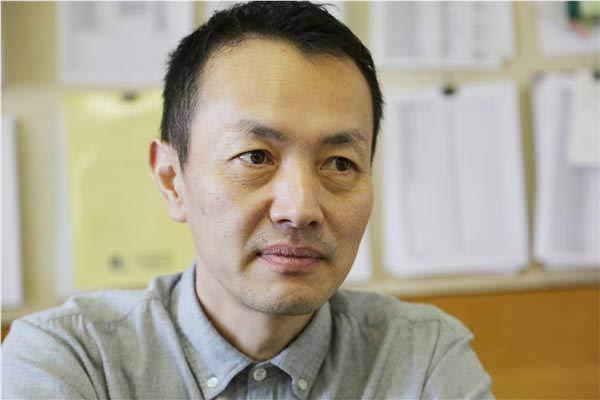
Japanese artist Kyosuke Hayashi's passion for jian zhan pottery has set him on a journey of exploration to create a new type of chinaware. His creations are now in the collections of the Palace Museum in Beijing and the British Museum in London. Photos by Cai Hong/China Daily
Japanese craftsman re-creates a rare style of Song Dynasty porcelain that has been long lost in China
In 2007, the Japanese ceramic artist Kyosuke Hayashi brought his reproduction of rare chinaware to Beijing for an exhibition. His Chinese counterparts greatly admired the replica but were also a little bit embarrassed as no one in the country could re-create it.
The rare piece Hayashi reproduced is jian zhan, which literally means tea bowls fired in kilns. The craft originated in Southeast China's Fujian province during the Song Dynasty (960-1279).
China's ceramic experts commended Hayashi's reproduction for achieving a similar scale of beauty to the jian zhan ware the Song masters achieved.
"It is amazing that the potters 800 years ago had a very good command of the technique," says Hayashi, adding that ceramic-making methods reached their pinnacle in the Song Dynasty.
Hayashi's creations, referred to as yohen tenmoku in Japanese, with yohen literally meaning "changed by the fire/flame", are now in the collections of the Palace Museum in Beijing and the British Museum in London.
Born in 1962 in Toki, central Japan's Gifu prefecture-one of the country's major ceramic producers-Hayashi has won many awards for his pottery and ceramic works in Japan.
The jian zhan have patterns of starburst sparkles embedded in a black glaze. Within each star is a navy blue color of glistening mother-of-pearl-a shiny substance that forms the inside of certain mollusk shells.
When observers gaze long enough at the surface, it appears to resemble an expanse of stars drifting across the heavens on a summer's night.
People from the Song Dynasty had a reason for tea bowls of this type. They would grind compressed tea into a fine powder with a stone mill, and then whisk it into froth in bowls. The best teas were judged by the purity and whiteness of their froth.

One of Japanese artist Kyosuke Hayashi's creations
Jian zhan tea bowls were ideal for appreciating the light frothy foam. The bowls had deep blacks and reds with flecks of gold-the perfect contrast to the white and green of the tea, making the tea seem even more pure.
Another method used was oil-spot glazing, one of the most difficult glazing techniques. It required precision in the application, the firing conditions and the cooling process.
Oil spots occur when there is an excess of iron oxide, which is allowed to cool slowly and form radiant spots on the surface.
In the 13th century, jian zhan ware was introduced to Japan by its Buddhist monks returning from their studies in China.
Japan's Ashikaga shoguns (1336-1573), both warriors and avid tea practitioners, promoted the use of the Chinese-made tea bowls in chado, or the Japanese tea ceremony. Since then, yohen tenmoku tea bowls have held a revered position in the history and development of chado.
The Song Dynasty came to an abrupt end in the wake of the Mongol nomads, and with it, powdered tea gave way to tea leaves. The secrets of jian zhan glazing and firing techniques were lost.
In contrast, Japan continued the tradition of the Song Dynasty. With their source of yohen tenmoku bowls cut off, they created replicas.
China has excavated many fragments of jian zhan ware but not a single complete piece. The only four remaining complete examples of the chinaware fired in the Song Dynasty exist in Japan.
Three of them are designated as National Treasures of Japan, kept in the Seikado Bunko Art Museum in Tokyo, the Fujita Art Museum in Osaka and the Ryuukouin Subtemple of the Daitokuji Temple in Kyoto. The fourth is in the Miho Museum outside of Kyoto, and the piece's existence was not widely known until fairly recently.
Up to the 1990s, it was widely believed that the techniques and quality of the Song Dynasty could not be replicated.
To learn more about the tradition and techniques of Song ceramic artisans, Hayashi traveled to Fujian to look for relics of yohen tenmoku before their glaze was changed by kiln firing.
He was lucky to find one that was exactly what he wanted.
"It was helpful in my study on replicating the yohen tenmoku ceramics," says Hayashi.
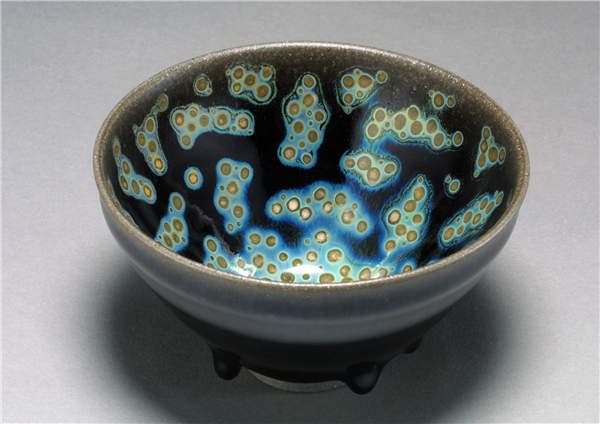
One of Japanese artist Kyosuke Hayashi's creations.
Scientists have discovered that items of jian zhan or yohen tenmoku contain a unique and incredibly difficult-to-produce crystalline formation known as epsilon-phase iron oxide.
Coincidentally, the jian zhan pieces with the highest count of this formation are also some of the most coveted for their beautiful silvery appearance.
It is believed that there was no way to control the finished product in the massive wood-burning kilns in the Song Dynasty. Because the adjustment of the fire in the kilns was left to chance when the bowls were made, their final appearance was impossible to predict.
Thanks to modern technology, things are easier now.
Hayashi works with modern techniques to re-create the yohen tenmoku ware. He uses an electric kiln to get better control of firing and more consistent results.
"If I fire numerous wares in my kiln, I apply some kind of special material to one of them and (it inevitably) turns out to be a yohen tenmoku," the Japanese artisan says.
"But I want to reproduce the yohen tenmoku ceramics in 'Hayashi's style'," he says.
Now the biggest challenge for him is the weather, as different conditions can influence the flow of smoke coming out of the kiln and, as a result, the bowls.
Jian zhan or yohen tenmoku bowls are still considered among the most perfectly realized objects devoted to the beauty and culture of tea.
"It would be no exaggeration to say that yohen tenmoku ware are the epitome of the ceramic style of the world," Hayashi says.
His passion for the pottery set him on a journey of exploration that continues to this day. His long-term goal is to create a new type of yohen tenmoku.
"When I look at the replicas coming from my kiln, I always think that better ones are on the way tomorrow," says Hayashi. "I enjoy the firing process more than the wares."
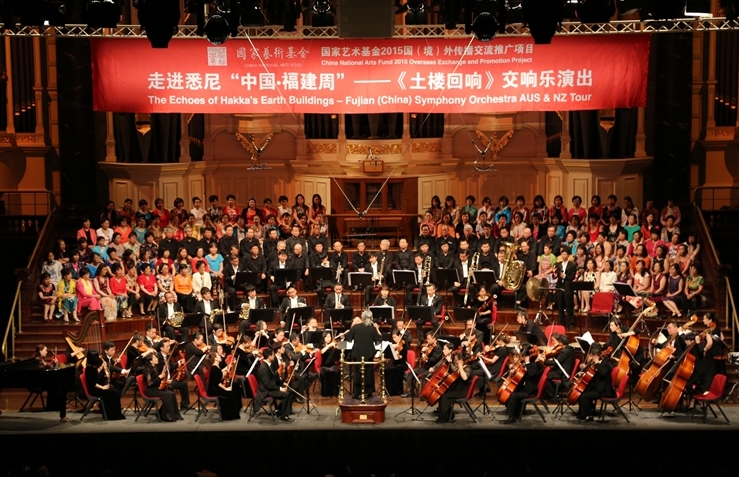 《土楼回响》在澳洲掀起文化热浪
《土楼回响》在澳洲掀起文化热浪 【走进内阁】认识澳大利亚最高级别的政府官员(一)
【走进内阁】认识澳大利亚最高级别的政府官员(一) 【90后看大佬】 “侨送光明,医济侨胞,借船出海”——澳洲康平国际医疗集团总裁陈星惠医生专访
【90后看大佬】 “侨送光明,医济侨胞,借船出海”——澳洲康平国际医疗集团总裁陈星惠医生专访 【90后看大佬】林辉源的“三不人生”
【90后看大佬】林辉源的“三不人生” 福建省侨办领导会见东南网澳大利亚站代表团
福建省侨办领导会见东南网澳大利亚站代表团 【90后看大佬】“左右合并”的幸福人生——澳洲潮州同乡会会长李国兴
【90后看大佬】“左右合并”的幸福人生——澳洲潮州同乡会会长李国兴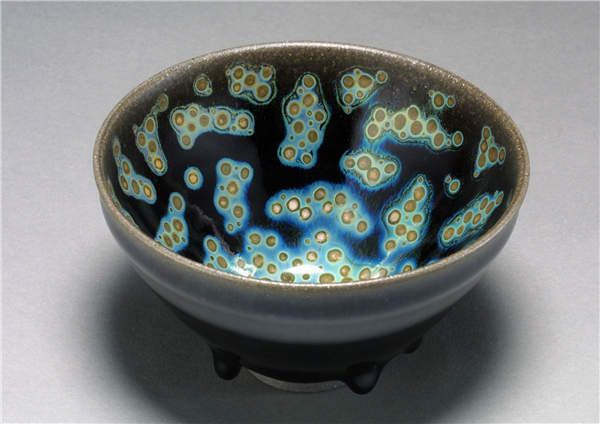 Firing up an ancient art
Firing up an ancient art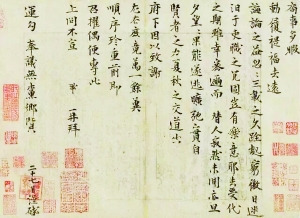 曾巩124字《局事帖》2.07亿元成交 20年增值45倍
曾巩124字《局事帖》2.07亿元成交 20年增值45倍 峨眉山十方普贤像开始贴金 耗资2000万元(图)
峨眉山十方普贤像开始贴金 耗资2000万元(图) 2015年全国十大考古新发现终极PK 今天揭晓结果
2015年全国十大考古新发现终极PK 今天揭晓结果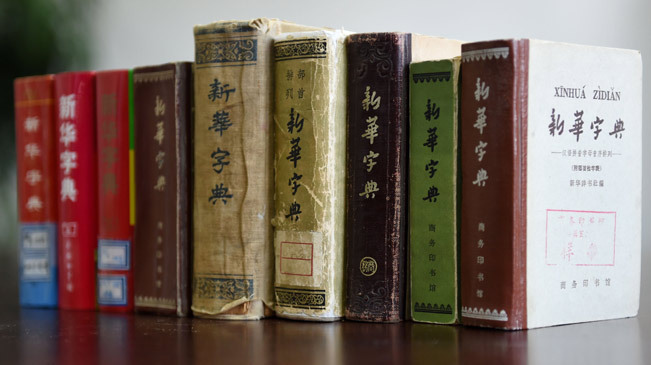 有本书印了5亿册,你肯定看过
有本书印了5亿册,你肯定看过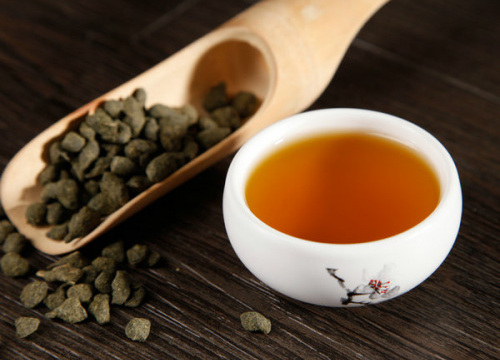 Long history of the blackened leaves
Long history of the blackened leaves
